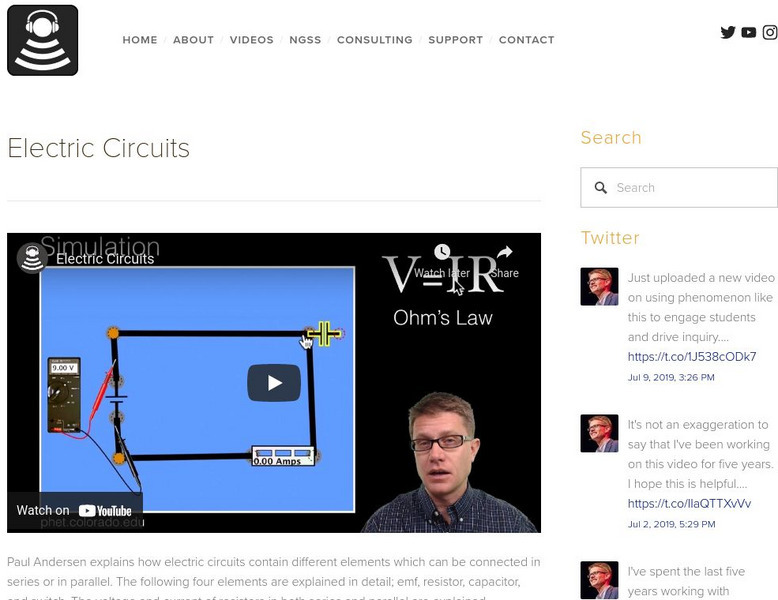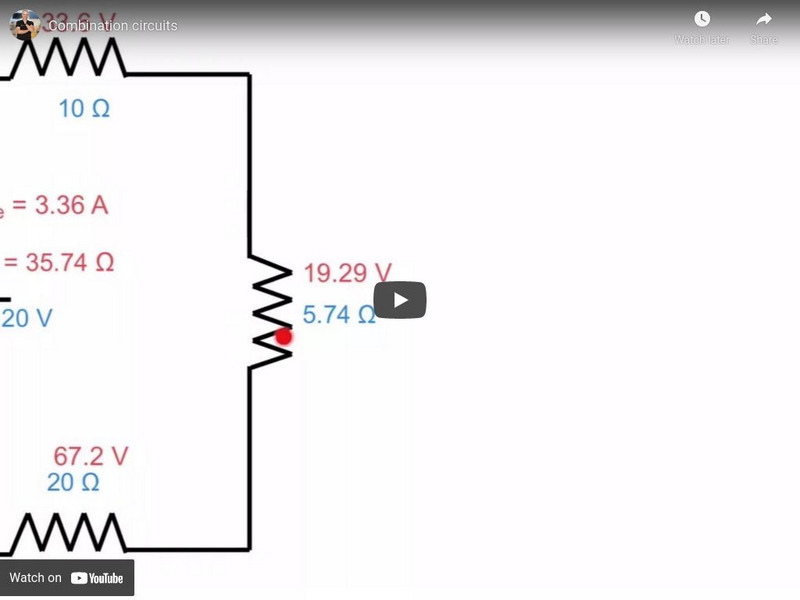Crash Course
Capacitors and Kirchhoff: Crash Course Physics #31
Analyze the workings of series and parallel circuits. An engaging video lesson explains Kirchoff's Laws in relation to circuits and conservation of energy. It includes a discussion of capacitors and their roles in both series and...
Crash Course
DC Resistors and Batteries: Crash Course Physics #29
All circuits are not created equal! Building on the previous lessons in the Crash Course series, the 29th lesson explains how electric current flows through a circuit. It spends equal time discussing both series and parallel circuits.
Bozeman Science
Series and Parallel Circuits
Build an understanding of electrical circuits in series and parallel. The video instructor demonstrates the effects of manipulating both a series and parallel circuit. Learners realize the difference between the types of circuits as well...
DoodleScience
Series and Parallel Circuits
Here's a video that explains the difference between series and parallel circuits, including the impacts of each on current and voltage.
Curated OER
Electricity and Circuits
A sleepy-sounding narrator explains how batteries and circuits work. Simple computer animations display the movement of electrons through parallel and series circuits. Since the narrator speaks slowly and clearly, and the animations are...
Bozeman Science
Bozeman Science: Electric Circuits
The following video narrated by Paul Andersen explains how electric circuits contain different elements which can be connected in series or in parallel. The following four elements are explained in detail; emf, resistor, capacitor, and...
Crash Course
Crash Course Physics #30: Series and Parallel Circuit Analysis
How does Stranger Things fit in with Physics and, more specifically, circuit analysis? I'm glad you asked! In this video episode of Crash Course Physics, Shini walks us through the differences between series and parallel circuits and how...
Other
The Electric Academy: Combination Circuits
Combination circuits can seem daunting at first. If you remember the rules of series and parallel circuits you'll be just fine. This video demonstrates how to make calculations about power and resistance in a mixed circuit. [10:23]







